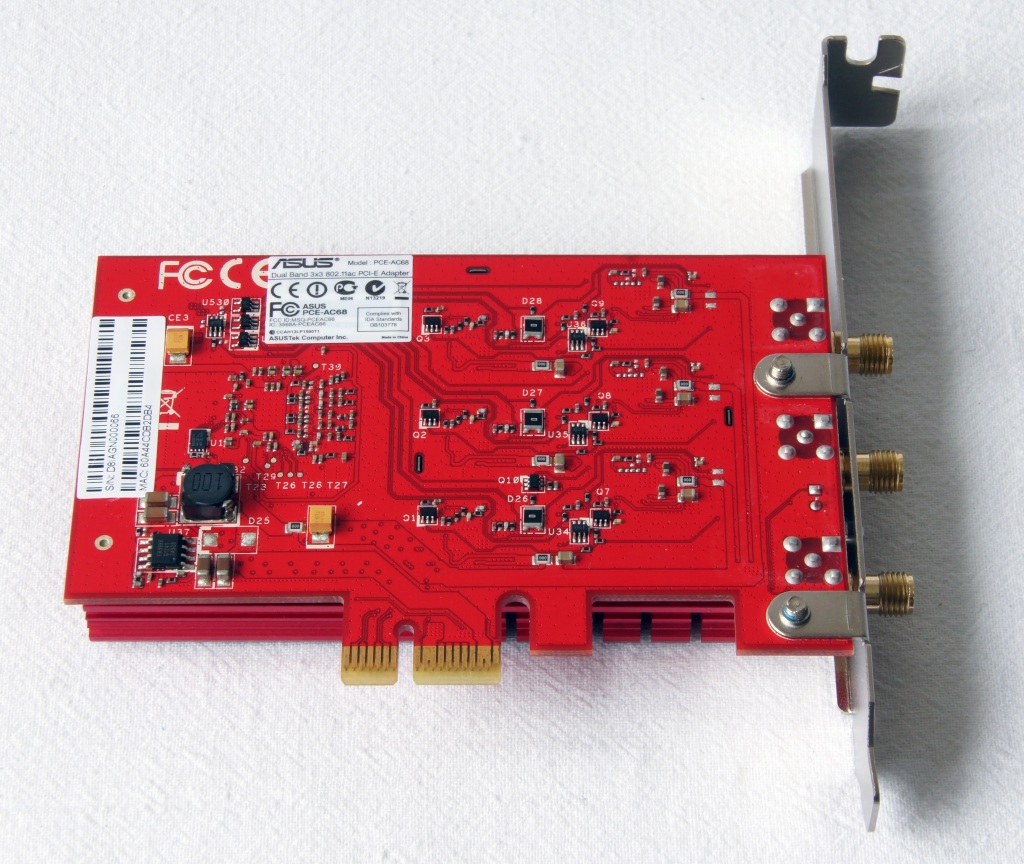


Happily, the base is heavy enough that it also stays in place on non-magnetic surfaces and Asus has equipped it with soft pads so it doesn’t scratch any surface, particularly magnetic ones. The base is magnetic, which lets it clamp to any metallic surface making for potentially easy wall mounting. Recognising this, Asus supplies a metre-long cable for connecting to the card directly and at the end of the cable is a heavy triangular base to screw in the antennas which allows for better positioning.
ASUS PCE AC68 TAILS PC
The antennas can be screwed directly into the card, but situating them at the back of your PC is hardly ideal placement to get the best out of them. For those with clear PC cases the red paintwork also looks rather good, like a piece cut off Iron Man.

The card carries a large passive heat sync that allows it to function silently and it is very well built, far more so than some graphics cards we have seen. The Asus PCE-AC68 comes in two parts: the PCI Express card that you slot into your PC and its antennas. If you have looked at the score above, you won’t be surprised to learn the Asus PCE-AC68 is what we use for all our 802.11ac router testing. It is designed to attain the fastest possible speeds from both 802.11ac and 802.11n routers works by twinning a powerful PCI Express card with three large amplified antennas.Īsus is marketing the PCE-AC68 at enthusiasts and small business running data intensive local networks, but pricing isn’t prohibitive for mainstream consumers looking to eliminate reception black spots in larger homes. The Asus PCE-AC68 is a flagship 802.11ac adaptor for desktop PCs.


 0 kommentar(er)
0 kommentar(er)
